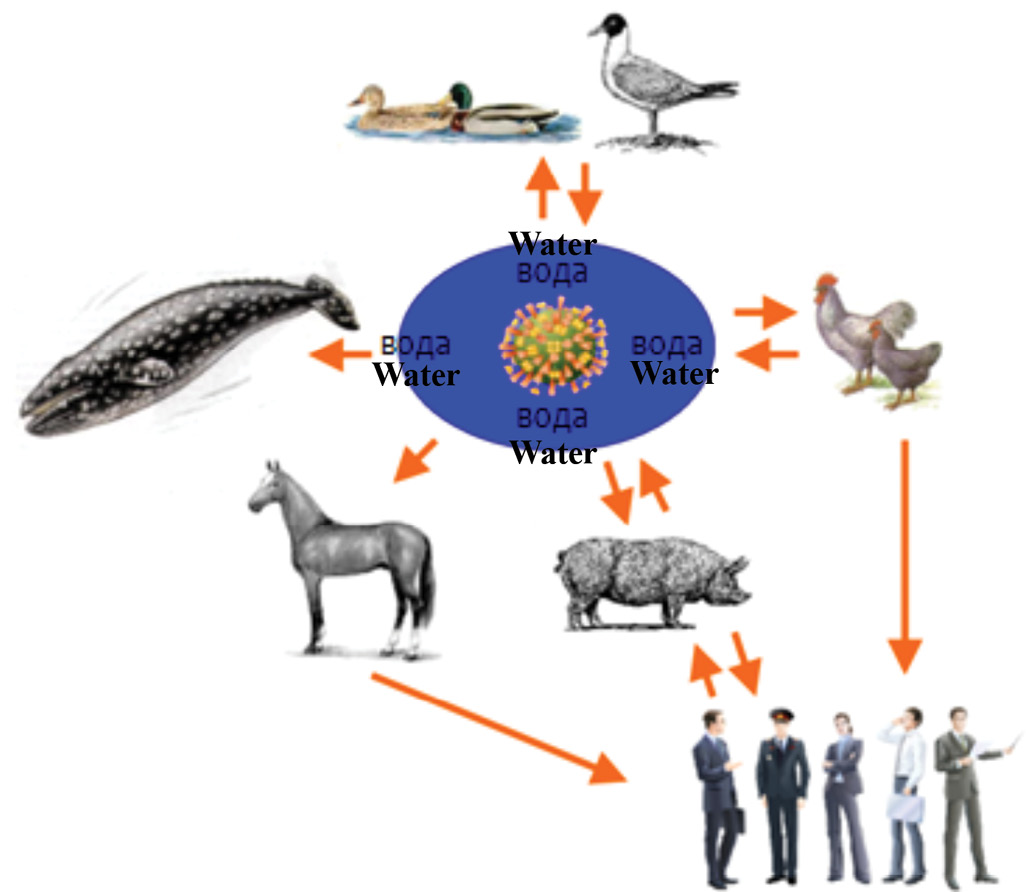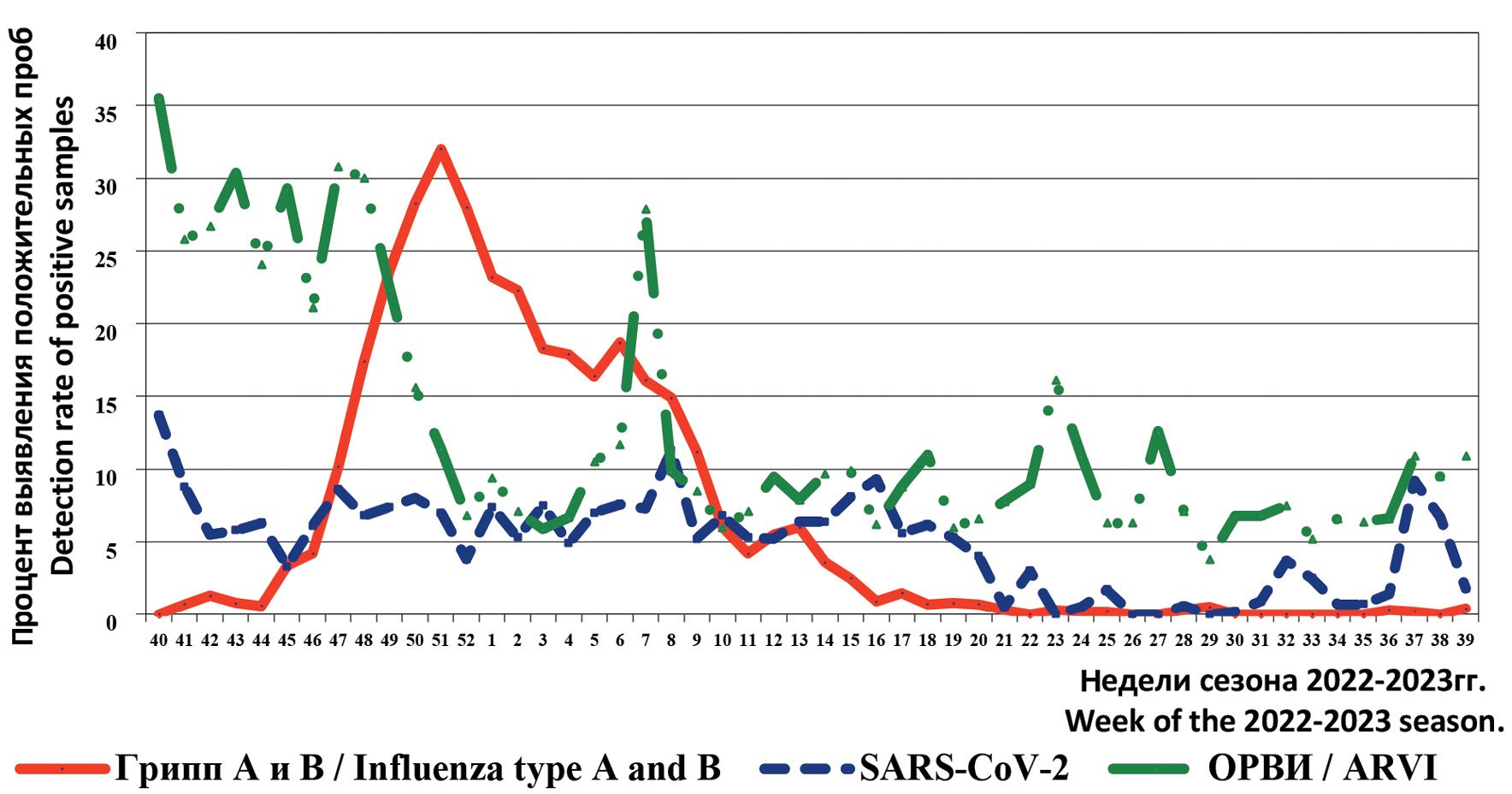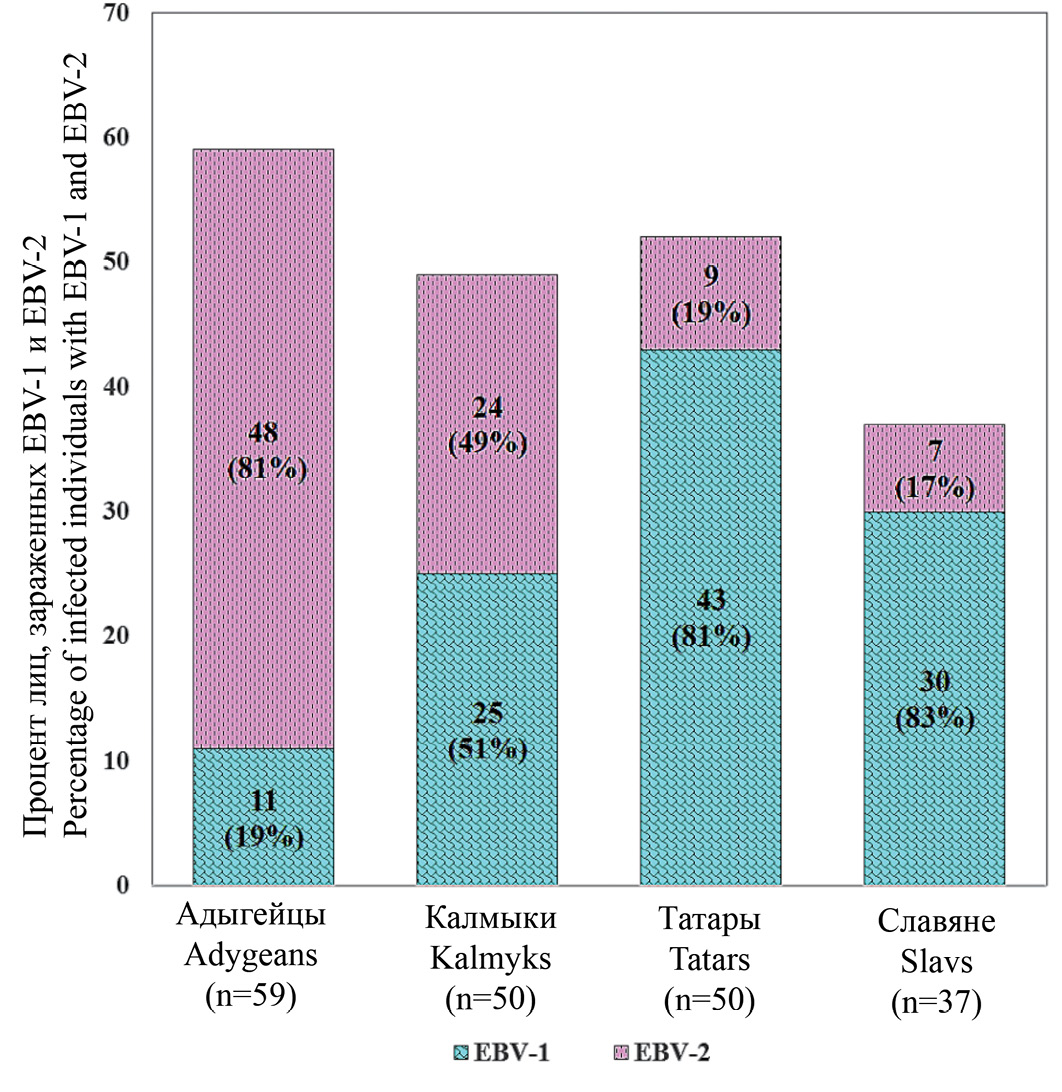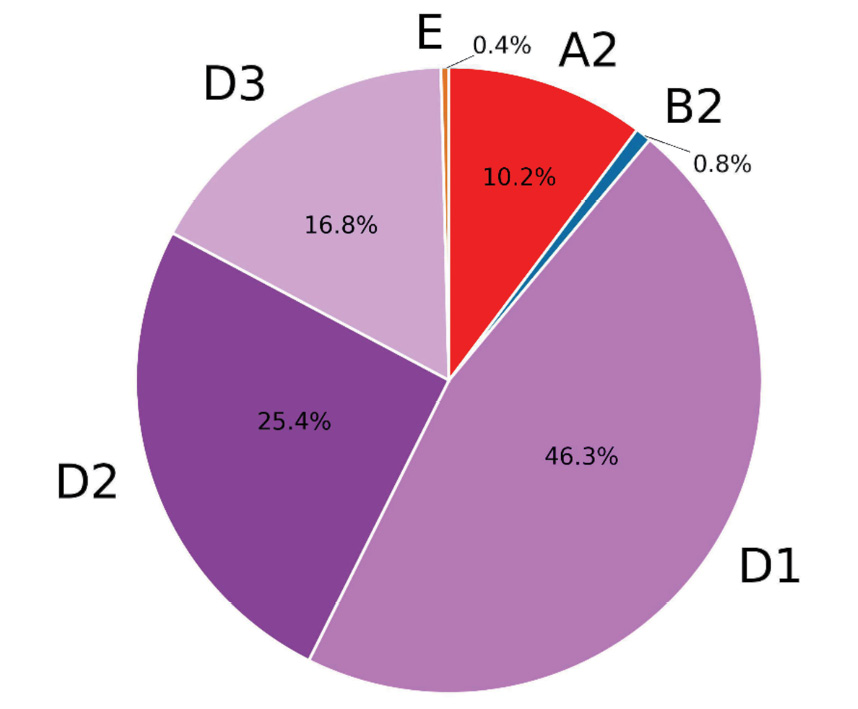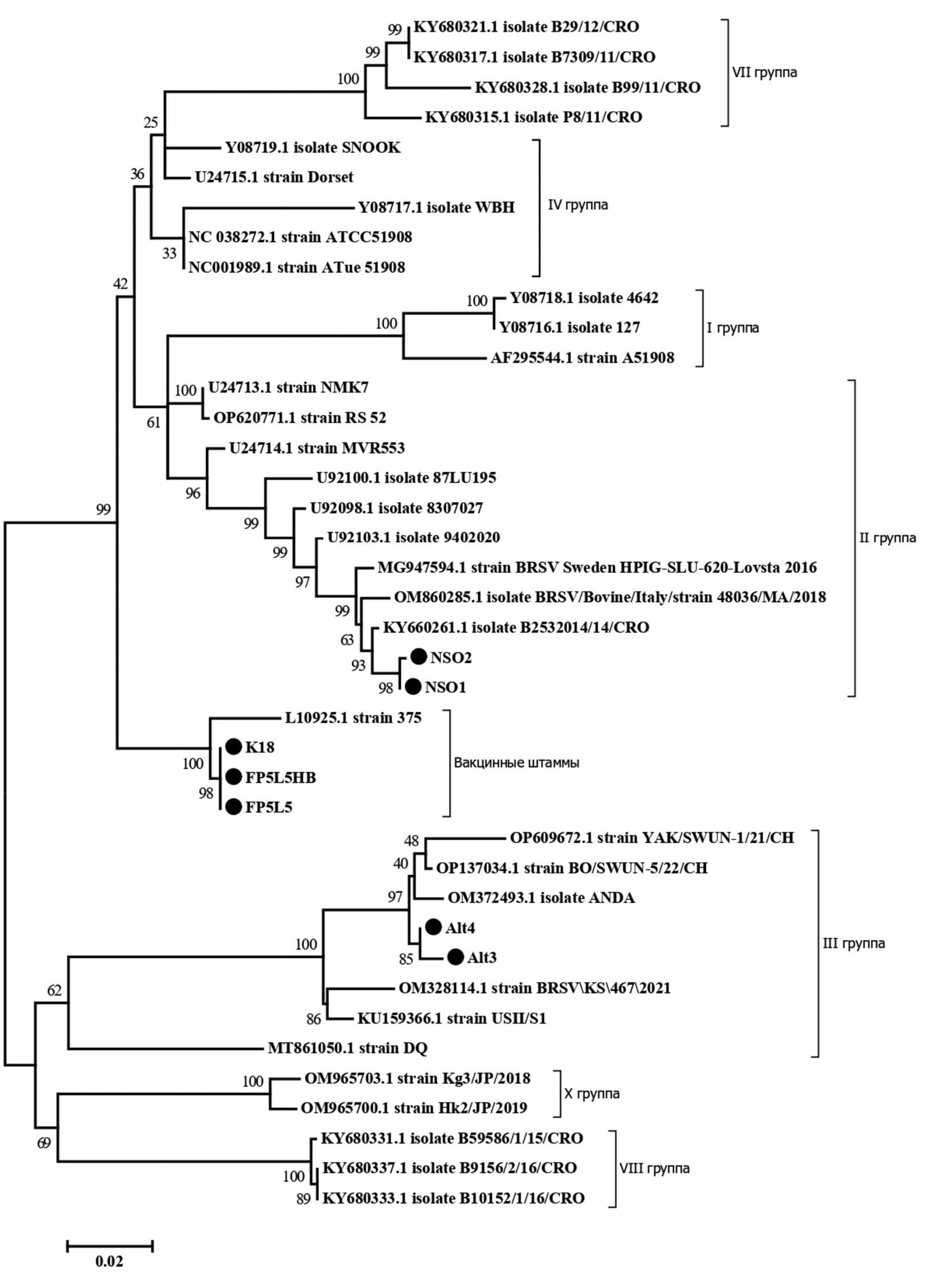Vol 69, No 1 (2024)
- Year: 2024
- Published: 14.03.2024
- Articles: 11
- URL: https://virusjour.crie.ru/jour/issue/view/132
Full Issue
EDITORIAL CONCEPT
To the 55th аnniversary of the Department of Virus Ecology with the Scientific and Practical Center for the Ecology and Epidemiology of Influenza (D.I. Ivanovsky Institute of Virology of the N.F. Gamaleya National Research Center for Epidemiology and Microbiology of the Ministry of Health of Russian Federation)
Abstract
The article presents historical aspects and key achievements of the Department of Virus Ecology (DVE) with the Scientific and Practical Center for Influenza Ecology and Epidemiology, which was established in 1969 at the D.I. Ivanovsky Institute of Virology of Academy of Medical Sciences of the USSR. For over 50 years, the DVE has been devoted to addressing fundamental issues in virus ecology, including the formation of viral populations in nature, and conducting comprehensive large-scale studies in the interest of the state’s biosecurity. The department’s primary focus is on particularly dangerous (arboviral) and socially significant (influenza and other acute respiratory viral infections, parenteral hepatitis) viral infections. As a result of this extensive work in the Northern Eurasia region, over 2,000 strains of zoonotic viruses (17 genera, 8 families), ecologically linked to various arthropod vectors and vertebrate hosts, have been isolated. Many of them have been registered in international catalogs as new species. The role of these isolated viruses in human pathology has been studied, new viral infections have been described, and diagnostic preparations have been developed. The scientific results obtained by the department are of high priority and internationally recognized.
 7-21
7-21


REVIEWS
Human herpes virus type 6 (Orthoherpesviridae: Roseolovirus): features of epidemiology and diagnosis
Abstract
Human herpes virus 6A and human herpes virus 6B (HHV-6A and HHV-6B) are ubiquitous viruses. The spectrum of clinical manifestations of HHV-6A/B infections is quite wide. The current understanding of the natural history and laboratory diagnosis of HHV-6A and HHV-6B, including their chromosome-integrated form, serves the basis for development of the tools for HHV-6 epidemiological monitoring. This article addresses the epidemiology and diagnosis of infections caused by these viruses, including ones in patients after transplantation of solid organs and allogeneic hematopoietic stem cells.
 22-30
22-30


Current diagnostics and biomarkers for arboviral infections (a review on Dengue, Zika, West Nile and Chikungunya viruses)
Abstract
Arboviral infections, transmitted to humans primarily through arthropod vectors, constitute a significant global health threat. Arboviruses, such as Dengue, Zika, Chikungunya, and West Nile viruses, continue to cause widespread outbreaks, necessitating advanced diagnostic tools. Emerging technologies including Lab On A Chip (LOC), Lab On A Disc (LOAD), Microfluidic Paper-Based Analytical Devices (µPADS), Lateral Flow Devices, CRISPR-CAS 12/13, Quartz crystal microbalance (QCM), and Nano-Technology are evaluated for their potential to enhance arboviral diagnosis, offering rapid, accurate, and point-of-care solutions. Furthermore, the identification of robust biomarkers, including Inflammatory Cytokines, Antibodies, Endothelial Activation Products and Indicators of Tissue or Organ Damage, is crucial for improving the understanding of disease pathogenesis, prognosis, and treatment response. A comprehensive analysis of potential diagnostics and biomarkers for arboviral infections sheds light on the evolving strategies to combat these medically significant diseases, ultimately contributing to more effective surveillance, diagnosis and management worldwide.
 31-41
31-41


ORIGINAL RESEARCHES
Properties of influenza viruses that caused epidemic increases in morbidity in Russia and countries of the world during 2022–2023. The effectiveness of vaccine prophylaxis
Abstract
The purpose of this work was to determine the characteristics of the circulation of various viral respiratory pathogens during the epidemic season 2022–2023 against the background of the ongoing evolutionary variability of SARS-CoV-2.
Materials and methods. The article uses methods used in «traditional» and «hospital» epidemiological surveillance of acute respiratory viral infections.
Results and discussion. The period from October 2022 to September 2023 was characterized by early and high activity of influenza A(H1N1)pdm09 virus, which was replaced by influenza B virus. The antigenic and genetic properties of strains were closely related to influenza vaccines viruses recommended by WHO experts for the current season. The effectiveness of influenza vaccines was confirmed (75.0%). All of the studied influenza A(H1N1)pdm09, A(H3N2) and B epidemic strais retained sensitivity to drugs with antineuraminidase activity. The structure and share of other ARVI pathogens have changed somewhat compared to the previous season: There was a tendency to increase the activity of HAdV and HMPV; almost equivalent activity of HRsV, HRV, HCoV and HBoV; and a decrease in HPIV activity. At the same time, the frequency of other ARVI pathogens did not reach the indicators of the pre-pandemic COVID-19 period. The rationale for updating the composition of influenza vaccines for the countries of the Northern Hemisphere in the 2023–2024 season is given.
 42-55
42-55


Epstein–Barr virus (Orthoherpesviridae: Lymphocryptovirus) among Russian ethnic groups: Prevalence of EBV types (EBV-1 and EBV-2), LMP1 gene variants and malignancies
Abstract
Introduction. The discovery of two EBV types (EBV-1 and EBV-2) has stimulated the study of their prevalence in populations and association with malignancies.
Objective. To study the prevalence of EBV-1 and EBV-2 types among ethnic groups in Russia, to analyze PCR products of the LMP1 gene in virus isolates, and to evaluate the contribution of EBV types to the incidence of malignant neoplasms.
Materials and methods. EBV isolates from oral lavages of the Republics Adygea, Kalmykia, Tatarstan and the Moscow Region (MR) representatives were studied by nested PCR for the belonging to EBV-1 and EBV-2 types. LMP1 amplicons obtained by real-time PCR from viral isolates DNA were classified and sequenced on an automatic DNA sequencer ABI PRISM 3100-Avant (USA). The sequencing results were analyzed using Chromas 230 and Vector NT programs (Invitrogen, USA). The reliability of the obtained data was assessed using statistical packages Statistica for Windows, 10.0.
Results. The prevalence rates of EBV-1 and EBV-2 in representatives of four ethnic groups were compared with the incidence rates of some tumors in the population of three Republics and MR.
The dominant persistence of the transforming in vitro EBV-1 type in representatives of the Republic of Tatarstan and MR correlated with a high incidence of gastric cancer and lymphomas in the population of these territories. On the contrary, predominant infection of the non-transforming in vitro EBV-2 type and both types of the virus in approximately the same percentage of representatives of Adygea and Kalmykia, respectively, correlated with a lower level incidence of above tumors in populations of these Republics. The differences between the incidence rates of neoplasms in the compared ethnic populations were statistically insignificant (p > 0.05). LMP1 variants of viral isolates did not reflect either the level of EBV persistence types or the incidence of tumors.
Conclusion. Infection of ethnic groups with EBV-1 and EBV-2 may vary significantly under the influence of various factors. The predominance of the in vitro transforming EBV-1 type in the population did not increase the incidence of tumors due to cases associated with the dominant virus type.
 56-64
56-64


NGS amplification panel for HBV (Hepadnaviridae: Orthohepadnavirus) sequencing
Abstract
Introduction. Hepatitis B virus (HBV) remains a pressing global public health concern. The clinical course of the disease, particularly its tendency towards chronicity and response to therapy, is significantly influenced by the HBV genotype and specific mutations. There is an imperative need for a straightforward, highly sensitive, and dependable method for whole genome sequencing of HBV.
Objective. Development and testing of an amplification panel for HBV whole-genome sequencing.
Materials and methods. We introduce an NGS amplification panel designed for genome sequencing of HBV on the Illumina platform. A panel consisting of 54 primers, divided into 2 pools and amplifying overlapping regions of the HBV genome up to 300 bp in length, was tested on 246 HBV DNA samples.
Results. The studied samples represented a genotypic diversity of the virus, with a pronounced predominance of the genotype specific to the Moscow region: 216, 27, 2, and 1 sample were identified as genotype D, A, B, and E, respectively. Five samples contained at least one mutation associated with antiviral therapy resistance, and twenty-three samples contained at least one mutation associated with vaccine escape described in the literature.
Conclusion. The present paper describes the stages of whole-genome sequencing of HBV, provides a laboratory protocol, nucleotide sequences of the primers and an approach to the data analysis. Using a list of clinical samples as example, the reliability of the panel is shown. The HBV panel holds immense potential for utilization in scientific research, epidemiological monitoring, and advancement of personalized medicine approaches.
 65-75
65-75


Occurrence in sick animals and genetic heterogeneity of Siberian isolates of bovine respiratory syncytial virus (Pneumoviridae: Orthopneumovirus; BRSV) identified in the territories of the Ural, Siberian Federal District and the Republic of Kazakhstan
Abstract
Introduction. Bovine respiratory syncytial virus (Pneumoviridae: Orthornavirae, Orthopneumovirus; Bovine orthopneumovirus, Bovine respiratory syncytial virus, BRSV) is one of causative agents of respiratory diseases in animals. The study of the occurrence and genetic diversity of this pathogen is of particular importance.
Objective. To study the frequency of virus in animals using RT-PCR and genetic heterogeneity of isolates based on determining the complete nucleotide sequence of glycoprotein G gene.
Materials and methods. A 381-bp region of glycoprotein F gene was used for identification of virus genome, while complete nucleotide sequences of G gene were used for phylogenetic analysis. Phylogenetic trees were constructed using the maximum likelihood method in MEGA 7.0 software.
Results. During outbreaks of respiratory diseases, BRSV RNA was detected in animals of all ages in samples of lungs, nasal secretions, pulmonary lymph nodes. Complete nucleotide sequences of glycoprotein G gene, 771 bp in length were obtained for five isolates and 789 bp in length ‒ for two isolates. Nucleotide similarity between them was 87–100%. Phylogenetic analysis assigned the isolates to subgroups II and III, each of which included two isolates. A separate clade formed by K18 isolate from animals imported from Canada and sequences from vaccines containing the attenuated «375» strain.
Conclusion. The virus genome was identified in cows and heifers (20.0 and 14.3%), in calves up 1 month of age (3.05%), and in calves from 1 to 6 months of age (6.7%). Complete G gene nucleotide sequence analysis is a useful tool for studying the molecular epidemiology of BRSV on particular territories.
 76-87
76-87


DISCUSSION
Why may the 21st century become the «century of pandemics»? А question for discussion
Abstract
In the first 20 years of the 21st century, almost annual outbreaks of viral infections were recorded. It is becoming increasingly clear that until humanity changes its destructive attitude towards nature, epidemics of deadly diseases will continue to occur. A question arises for discussion: is the existing arsenal of antiviral agents sufficient to withstand the current unfavorable socio-economic situation in the world?
 88-90
88-90


OBITUARY
 91-91
91-91


 92-92
92-92


INFORMATION
Plan of the virology section of the Moscow branch of the All-Russian Society of Epidemiologists, Microbiologists and Parasitologists for the first half of 2024
 93-93
93-93











